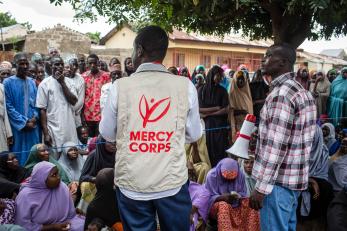Managing Complexity: Adaptive Management at Mercy Corps

17 June 2015
Development actors increasingly agree that a confluence of new challenges and greater complexity require aid agencies to be more agile. We need to be able to adapt in a timely and intentional way, by better understanding, and responding to, contextual dynamics.
How, then, can we set up our organizations, country offices and programs to be better able to adapt? This paper pulls out practical tips and short examples for what we have found to be the most important elements of adaptive management at Mercy Corps:
- Organizational culture provides the cues, expectations and incentives to prioritize learning and adaptation. This section provides suggestions for leadership, teamwork, physical cues and the importance of reinforcing culture through formal mechanisms.
- People and skills: Adaptive management depends upon a respected, empowered and accountable team, equipped with the skills of critical thinking, analysis and creativity who are expected to gather and use data and information in their work. This section looks at team composition, recruitment, skills building and coaching, and accountability.
- Tools and systems: A foundational culture of investigation, debate and agility needs to be supported and reinforced by a broad set of tools (both technical and managerial), processes (such as recruitment) and systems (such as finance, procurement and M&E). This section looks at tools and systems for planning and monitoring, regular analysis, providing space for reflection, piloting approaches and internal systems, norms and policies.
- Enabling environment: To do adaptive management, and work on the changes needed in the first three components often goes beyond the vision of an agency. The ability to be lean and nimble requires buy‐in and flexibility from the broader enabling environment, such as donors and host governments. This section talks about how donors’ systems and expectations can support adaptation at initial program design and implementation stages.